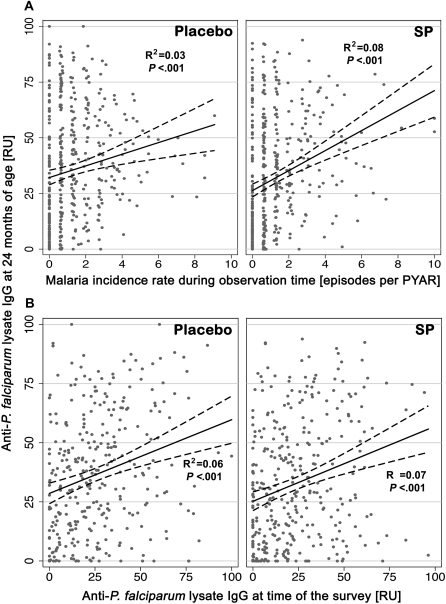Figure 1.
Correlation of anti–Plasmodium falciparum lysate IgG antibody (PfLIgG) levels and malaria incidence rate. A, Correlation of PfLIgG levels at the age of 24 months with the documented malaria incidence rates during the 21-month observation period. There is a similar pattern in children formerly treated with placebo or sulfadoxine-pyrimethamine (SP). B, Correlation between individual PfLIgG levels at age 24 months and PfLIgG levels at the time of the survey, plotted by treatment. Despite the long time interval between the 2 measurements, there is a positive correlation with a similar pattern in both study arms. PfLIgG level was measured by enzyme-linked immunosorbent assay and expressed in relative units (RUs) as described previously [11]. PYAR, person-years at risk.

